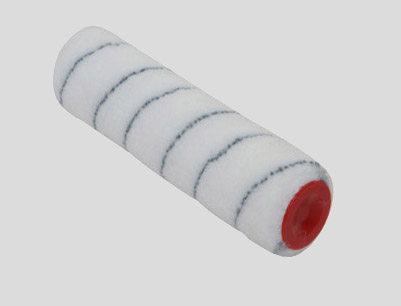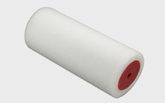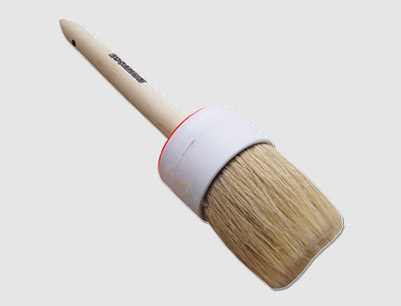How to Choose the Best Paint Roller for Your Home Project
Sep. 08, 2025How to Choose the Best Paint Roller for Your Home Project
Have you ever stood in the paint supply aisle, feeling overwhelmed by the wide variety of paint rollers? Or perhaps you have completed a home painting project only to be disappointed by streaky or uneven results?
Choosing the right paint roller is crucial to achieving a smooth and professional-looking finish on your walls.
This comprehensive guide will help you select the ideal paint roller for your specific project, whether you are updating a room, painting furniture, or applying a fresh coat to cabinets. By following these recommendations, you can improve the efficiency and quality of your painting projects while ensuring a polished and consistent finish.
Understanding Paint Roller Components
Before focusing on specific roller types, it is important to understand the two main components of a paint roller: the frame and the cover.
Frame: Handle and Rotating Cage
The frame serves as the structural backbone of the roller. It consists of:
Handle: This is the part you grip while painting. Ergonomically designed handles reduce hand fatigue, especially during larger projects such as painting an entire room or multiple walls.
Rotating Cage: The cage holds the roller cover in place and allows it to rotate smoothly. High-quality frames provide better control and a more even application of paint.
Cover: Determines Paint Application and Finish
The roller cover is the part that comes in direct contact with both the paint and the surface. Choosing the appropriate cover can dramatically affect the outcome of your paint project. Key factors include:
Material: Covers may be made from foam, microfiber, synthetic blends, or natural fibers. Each type performs differently depending on the paint and surface.
Absorption: The ability of a roller to hold paint determines how much paint can be applied in a single stroke. Highly absorbent rollers reduce the need for frequent reloading, saving time.
Texture: The nap, or texture, of the roller affects the final appearance of the paint. Smooth naps are ideal for flat surfaces, while thicker naps work better on textured surfaces.

Selecting the Right Paint Roller Cover
Choosing the correct roller cover is essential to achieving a professional finish. The material and size of the roller influence the final appearance of the painted surface.
Common Roller Cover Materials
Natural Fibers: Excellent for oil-based paints and rough surfaces such as brick or stucco. These covers apply paint evenly without shedding fibers. Examples include lambswool and mohair.
Microfiber: Known for its high paint-holding capacity, microfiber can absorb up to three times more paint than standard rollers. This reduces the frequency of reloading and produces a smooth finish, making it suitable for walls, doors, and trim.
Polyester: Durable and resistant to matting, polyester covers work well with water-based paints and can be used on both smooth and rough surfaces.
Foam: Ideal for smooth surfaces such as doors and cabinets, foam rollers produce a fine, glossy finish but may wear more quickly than fiber rollers.
Blended Fibers: Combining natural and synthetic fibers, these covers are versatile and suitable for a range of paint types and surfaces.
Preparing a New Roller to Remove Lint
New rollers may have loose fibers that can stick to freshly painted surfaces. To prevent this:
Wrap painter’s tape around the roller with the sticky side facing out.
Remove the tape carefully. The fibers will adhere to the tape, leaving the roller clean and ready for use.
Roller Cover Thickness (Nap)
The nap of the roller should match the surface texture:
3/16 to 1/4 inch: Ideal for ultra-smooth surfaces such as doors, trim, and glossy walls.
3/8 to 1/2 inch: Suitable for most interior walls and medium-textured surfaces.
3/4 to 1 inch: Best for rough surfaces, including textured walls and exterior surfaces.
1 1/4 to 1 1/2 inch: Recommended for very rough surfaces such as concrete or brick.
Choosing the Right Roller Size
The size of the roller affects efficiency and ease of use:
18 inches: Suitable for large areas and open floor plans but can be heavy when loaded with paint.
9 to 12 inches: Standard size for walls and ceilings.
6 to 7 inches: Ideal for furniture and baseboards.
4 inches or less: Mini rollers are perfect for edges, corners, and tight spaces.
Selecting Rollers Based on Surface Type
Different surfaces require different roller types:
Stucco, Decks, Brick, and Masonry: Use a thick nap of 3/4 inch or more to ensure paint penetrates the textured surface. Durable rollers that handle heavy paints are recommended.
Ceilings and Drywall: Medium nap rollers of 3/8 inch provide a smooth and even finish without excessive texture.
Walls, Wood, and Metal: Small 1/4 inch or foam rollers provide a fine finish for walls, furniture, and metal fixtures.
Light to Medium Textured Surfaces: Microfiber rollers give a smooth finish and hold ample paint to cover imperfections.
Smooth Surfaces: White woven short nap rollers leave a lint-free, polished finish, perfect for cabinets and high-gloss surfaces.
Understanding the materials, nap, and size of paint rollers allows you to select the best tool for any home painting project. With the right roller, painting becomes more efficient and produces a professional-quality finish.
Choosing the correct roller ensures your walls, furniture, and other surfaces are evenly coated, transforming your home with a clean and polished appearance.















